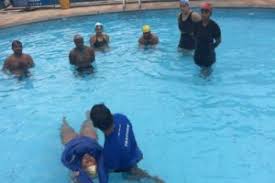
Teaching methodologies in swim schools play a key role in helping students of all ages develop essential water skills and build confidence in aquatic environments. From structured progression systems to adaptive techniques, effective teaching methods ensure that each student has a positive and productive learning experience. Here’s a look at some key methodologies that benefit both instructors and students.
1. Structured Skill Progression
One of the most effective methodologies in swim instruction is a structured progression system. This method divides skill levels into manageable stages, allowing students to advance through foundational skills before moving on to more complex techniques. Progression systems build confidence by helping students achieve small milestones, leading to steady, measurable improvement.
2. Visual and Demonstrative Techniques
For many learners, visual cues and demonstrations are crucial to understanding new skills. Instructors can use this methodology by physically demonstrating strokes, kicks, and other movements in or out of the water. Visual teaching helps students grasp concepts more quickly and provides a clear standard for them to emulate.
3. Positive Reinforcement
Encouragement and positive feedback are essential in helping students overcome fear and build confidence. This methodology focuses on reinforcing small achievements and celebrating progress, fostering a supportive environment that motivates students to continue learning. By emphasising positive reinforcement, instructors help students associate swimming with fun and accomplishment.
4. Adaptive Instruction for Diverse Needs
A key aspect of effective swim instruction is the ability to adapt teaching methods for individuals of different ages, abilities, and learning styles. Teaching methodologies that accommodate diverse needs make lessons inclusive, ensuring that all students—regardless of physical ability or experience—can participate and benefit from swimming.
5. Play-Based Learning for Young Children
For young children, play-based learning is an effective methodology that uses games and interactive activities to teach basic water skills. This approach makes lessons engaging and enjoyable, allowing children to develop comfort and familiarity with the water through play. Techniques like singing songs or retrieving floating toys help introduce essential skills in a relaxed setting.
6. Repetitive Practice for Skill Mastery
Repetition is essential for mastering swim skills. By consistently practicing fundamental movements, students reinforce their muscle memory and refine their techniques. Repetitive practice, combined with constructive feedback, ensures that skills become second nature, enabling students to swim with confidence and control.
Conclusion
Effective teaching methodologies in swim schools create a supportive and structured learning environment that meets the diverse needs of students. From progressive skills and visual cues to adaptive instruction, these methods help instructors guide students towards greater skill mastery and water safety awareness.
